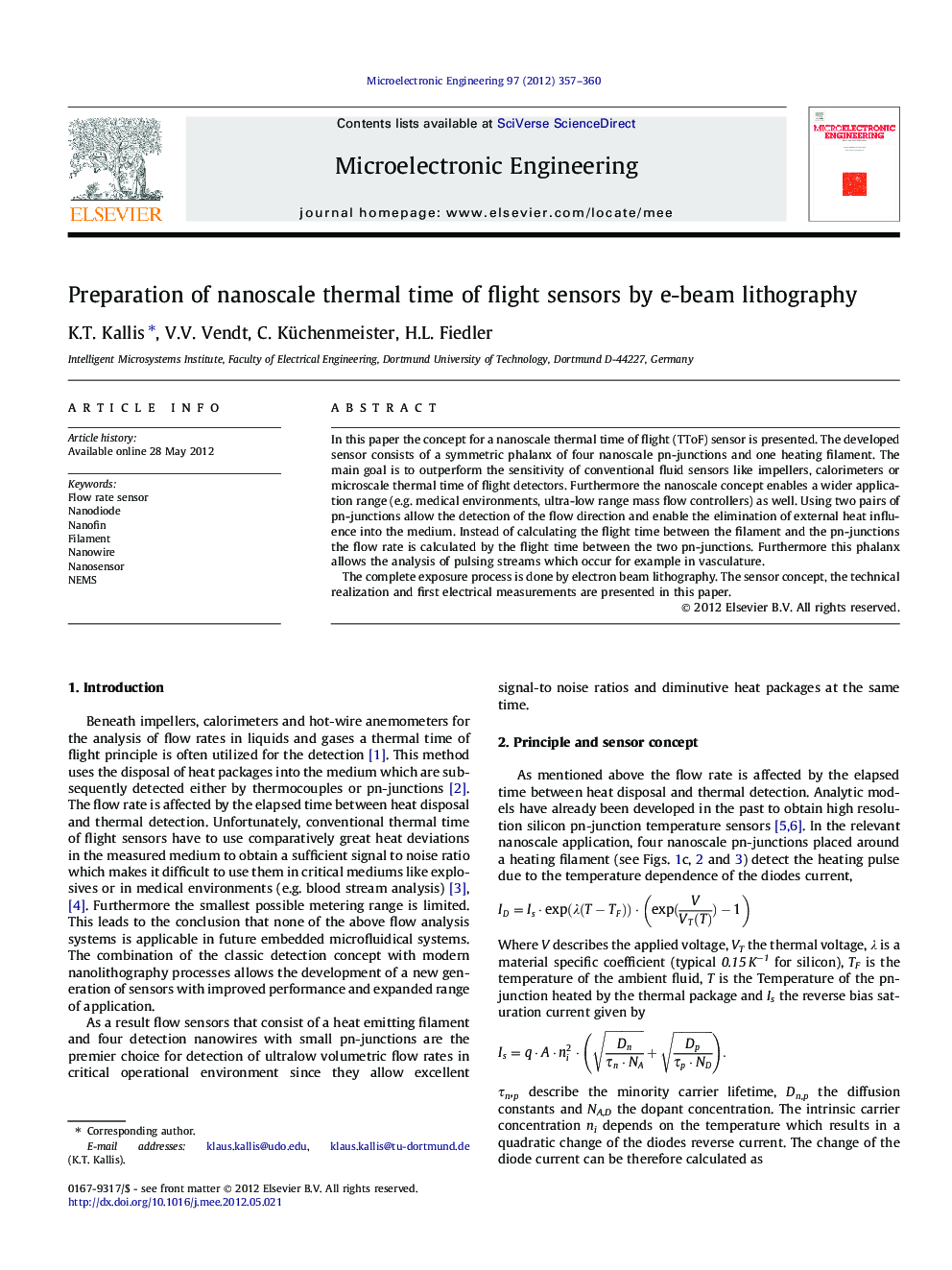| Article ID | Journal | Published Year | Pages | File Type |
|---|---|---|---|---|
| 544406 | Microelectronic Engineering | 2012 | 4 Pages |
In this paper the concept for a nanoscale thermal time of flight (TToF) sensor is presented. The developed sensor consists of a symmetric phalanx of four nanoscale pn-junctions and one heating filament. The main goal is to outperform the sensitivity of conventional fluid sensors like impellers, calorimeters or microscale thermal time of flight detectors. Furthermore the nanoscale concept enables a wider application range (e.g. medical environments, ultra-low range mass flow controllers) as well. Using two pairs of pn-junctions allow the detection of the flow direction and enable the elimination of external heat influence into the medium. Instead of calculating the flight time between the filament and the pn-junctions the flow rate is calculated by the flight time between the two pn-junctions. Furthermore this phalanx allows the analysis of pulsing streams which occur for example in vasculature.The complete exposure process is done by electron beam lithography. The sensor concept, the technical realization and first electrical measurements are presented in this paper.
Graphical abstractFigure optionsDownload full-size imageDownload as PowerPoint slideHighlights► A concept for a nanoscale thermal time of flight (TToF) sensor is presented. ► The sensor consists of a symmetric phalanx of four nanoscale pn-junctions and one heating filament. ► A first prototype was fabricated. Furthermore the sensor response was electrically analyzed.
